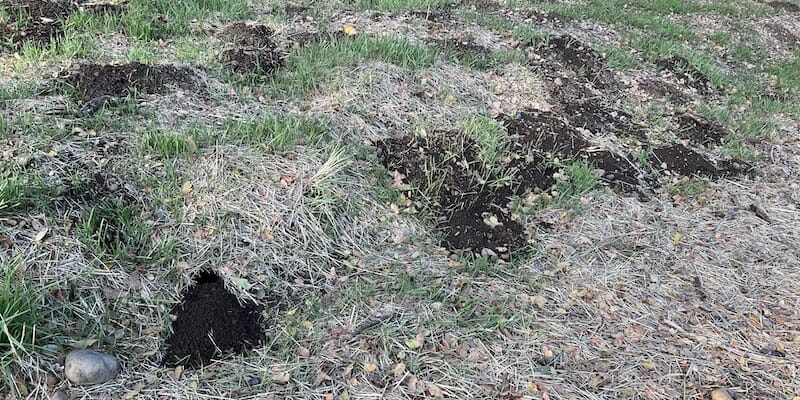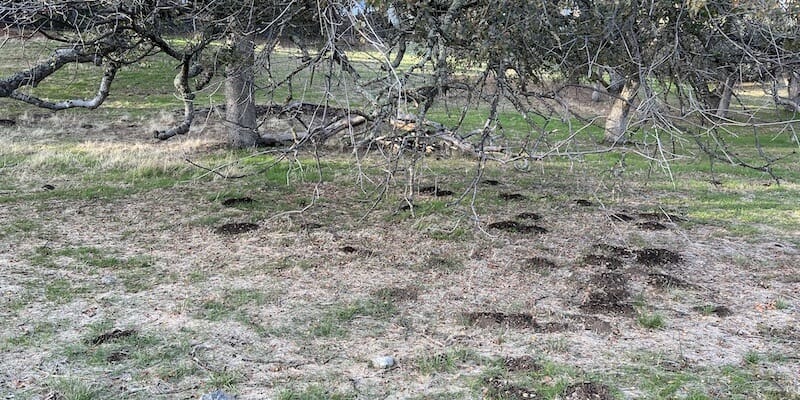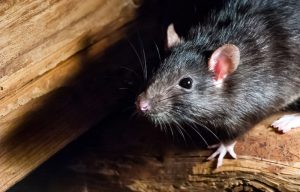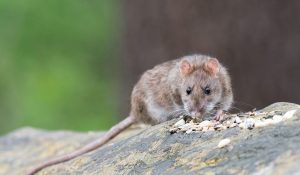Gophers are digging, intrusive pests that can wreak havoc on your lawn and garden.
While people expect to see gophers during the summer, many believe that gophers go underground and sleep all winter long. So, is that true?
Do gophers hibernate?
This blog will answer that question and discuss how to protect your property from winter gopher predation.
Let’s dive in.
Why are Gophers a Problem in the Winter?

Before we discuss whether gophers hibernate, let’s discuss why they’re a problem in the first place.
As you’ll remember from our other blogs, gophers are small, furry rodents. They’re a little bigger than mice, with adults maturing between 5-14” in length. They weigh around 1 pound and exist throughout North America.
Despite their small size, gophers are strong diggers, often creating tunnels that can reach 200 to 2,000 square feet.
Gophers become a problem on residential and commercial properties because they breed rapidly and create unsightly (and dangerous) mounds.
In fact, a single gopher can create several mounds in a day, destroying a manicured lawn and creating trip and fall hazards. If you have livestock or domestic pets, gophers can create deep holes that can be a lethal hazard. It’s common for horses and cows to step in gopher holes and break legs or sustain serious muscle or ligament injuries.
Gophers are also voracious eaters. They’re herbivores who feed on vegetation and love eating the roots, buds, and new growth of plants, shrubs, and trees.
Do Gophers Hibernate in the Winter?
The simple answer is NO.
Gophers, moles, and ground squirrels do not hibernate. Instead, they’re actively working, even if it’s a little slower than their usual summer pace.
Because gophers spend most of their time underground during the winter, they may be more challenging for homeowners to detect, but that doesn’t mean they’re sleeping.
What do Gophers do in the Winter?
During the winter, gophers focus on keeping their activity levels as low as possible and storing enough food to get through the chilly days ahead.
In non-irrigated areas, gophers will breed during late winter and early spring. The gopher gestation period is less than three weeks, and females give birth to litters of 5-6 young in underground burrows.
Where do Gophers go During the Winter?
While gophers are most active during the spring and fall, they don’t hibernate when the weather changes and winter sets in.
Instead, they descend deeper beneath the soil line, taking shelter in tunnels and burrowing below the frost line. Gopher burrows can sometimes be up to 6 feet deep, depending on soil conditions.
What do Gophers eat?
Since gophers don’t hibernate during the winter, they need food to keep their energy levels up.
Gophers spend most of their time belowground during the winter months, where they eat roots, tubers, and grubs and stay busy stocking and storing food in their networks of tunnels and burrows.
During warm, sunny days, they’ll pop up to browse above ground, grazing near the entrances of their burrows.
What Damage do Gophers Cause?

Gophers commonly invade yards and gardens. As they dig their underground tunnels, they can cause extensive damage to ornamental plants and landscaping.
Gophers can destroy the roots of grasses, shrubs, and trees and may even pull entire plants down into their tunnels from below.
In regions that get snow in the winter, gophers will feed from the surface of the snow, eating the bark several feet up a tree.
This is called “girdling” and is often fatal for trees – especially young saplings. Gophers may also cause girdling damage belowground, as they gnaw on the large roots a tree relies on to survive.
As gophers dig their deep winter burrows, they can cause soil instability that can impact the integrity of your sidewalks, patios, and your home’s foundation.
Gophers may also gnaw through flexible plastic water lines, utility and irrigation systems, and drip irrigation pipes. Additionally, the tunnels they dig during the winter can divert and redirect irrigation water, leading to soil erosion during the summer months.
Finally, the mounds gophers create in lawns can interfere with mowing equipment and destroy the look and feel of a well-manicured outdoor space.
6 Winter Gopher Control Tips
While gophers are active throughout the year, winter (before they begin to reproduce in the spring) is the best time to control their populations.
Here are a few of our top tips:
1. Check your plants for damage
During the winter, gophers spend most of their time underground eating roots. During these months, they can damage shrubs, trees, and ornamental plants considerably.
Because gophers seldom come to the surface, though, it can be tough to identify gopher damage before it gets severe.
With this in mind, keep a close eye on your plants during the winter. Watch trees, shrubs, gardens, and bushes for signs of predation, including browning leaves, chewed roots or tubers, or long mounds of excess soil near the plant’s base.
The sooner you identify signs of gopher damage, the sooner you’ll be able to take action to save your plants.
2. Install a lined trench to protect your yard
If you want to get serious about wintertime gopher prevention, dig and line a trench around your yard before the soil freezes.
To deter gophers in the winter, the trench should be at least 6” wide and deeper than the frost line in your area (this map can help you figure out frost depth measurements where you live).
Once the trench is in place, line it with a wire mesh screen or hardware cloth, which will prevent gophers from digging through it in search of wintertime forage.
3. Keep up on the scare tactics
For summertime gopher control, we often recommend scare tactics like sonic spikes.
When inserted into the ground, these spikes emit electronic pulses to create annoying subterranean noises that drive gophers away.
In the winter, these tactics can be just as effective. To create a barrier of protection around your yard, install sonic spikes at regular intervals around the perimeter of your property.
When used in conjunction with other gopher control methods (like trenches, repellents, and more), these spikes can help prevent gophers from using your yard as a winter haven.
4. Consider treating the area around your property
If possible, extend your winter gopher control efforts to the 20 or so feet around your property line.
This provides an added layer of protection and makes it even harder for gophers to get around your control methods and enter your yard.
Do you have neighbors who are also struggling with gopher problems? Consider working together to create a more expansive network of gopher control efforts to protect all the property in your area.
5. Use gopher traps
In California, pocket gophers are classified by the California Department of Fish and Wildlife as nongame mammals.
That means you do not need a trapping license to remove them; they can be controlled “at any time and in any legal manner.”
Trapping is an effective way to control gophers and reduce their populations to manageable levels.
Today, there are several types of gopher traps available, including lethal and non-lethal varieties. The most common lethal options are 2-pronged pincer traps, which kill gophers instantly.
You can also use live traps, which contain the gophers but do not kill them. In California, though, any animal you trap must be immediately euthanized (humanely) or released on the site it was trapped.
Because of the difficulties associated with using live or lethal traps, we recommend partnering with a skilled gopher control team who can help you find the right solution for your property.
6. Invest in an annual gopher program
What’s the best way to control gophers in the winter?
Outsource the entire process to an expert like Smith’s Pest Management.
When you enroll in our annual gopher control program, you’ll get the peace of mind that comes with knowing your property is protected from gophers 365 days a year.
Customers who enroll in this program receive regular gopher inspections and treatments from one of our skilled gopher control professionals.
During the summer months, our techs will deploy proven control methods, ranging from exclusion and barrier devices to traps and deterrents.
They’ll return to your property every few months to assess the progress, check for new infestations, and provide follow-up treatment as needed.
This allows you to proactively prepare your property for the winter months and enjoy expert gopher control services that keep your yard gopher free, even during the coldest season.
Looking for Effective Winter Gopher Control in the San Francisco Bay Area? We Can Help!
Your gopher control efforts shouldn’t stop during the winter months! While gophers may be harder to see during the winter, they’re no less active.
Fortunately, protecting your property doesn’t need to be complicated. By implementing winter-specific control efforts and investing in an annual gopher control program from Smith’s, you can keep your property safe and gopher-free all year.
Ready to learn more or sign up for your winter gopher control treatment? Contact us today.






